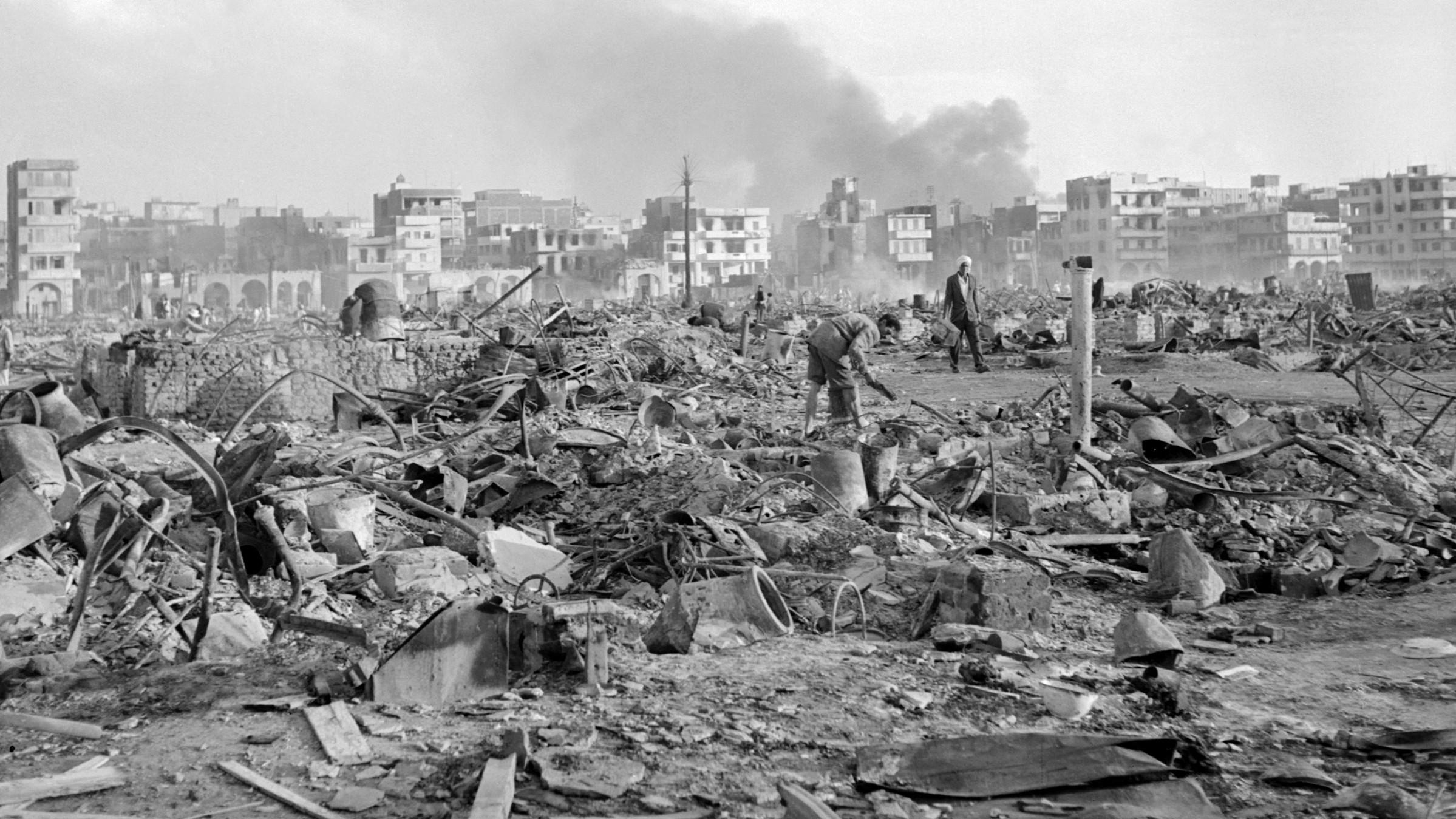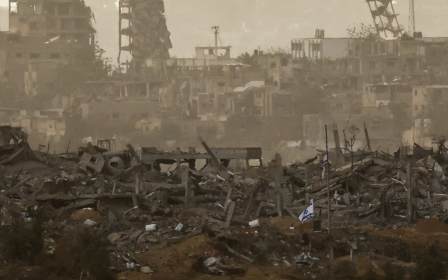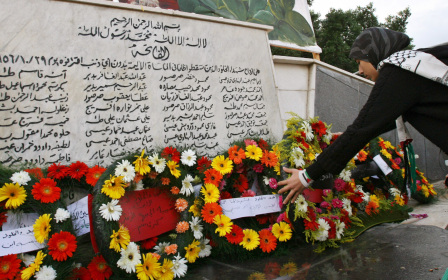Israel's mass murder of Palestinians in Gaza began seven decades ago
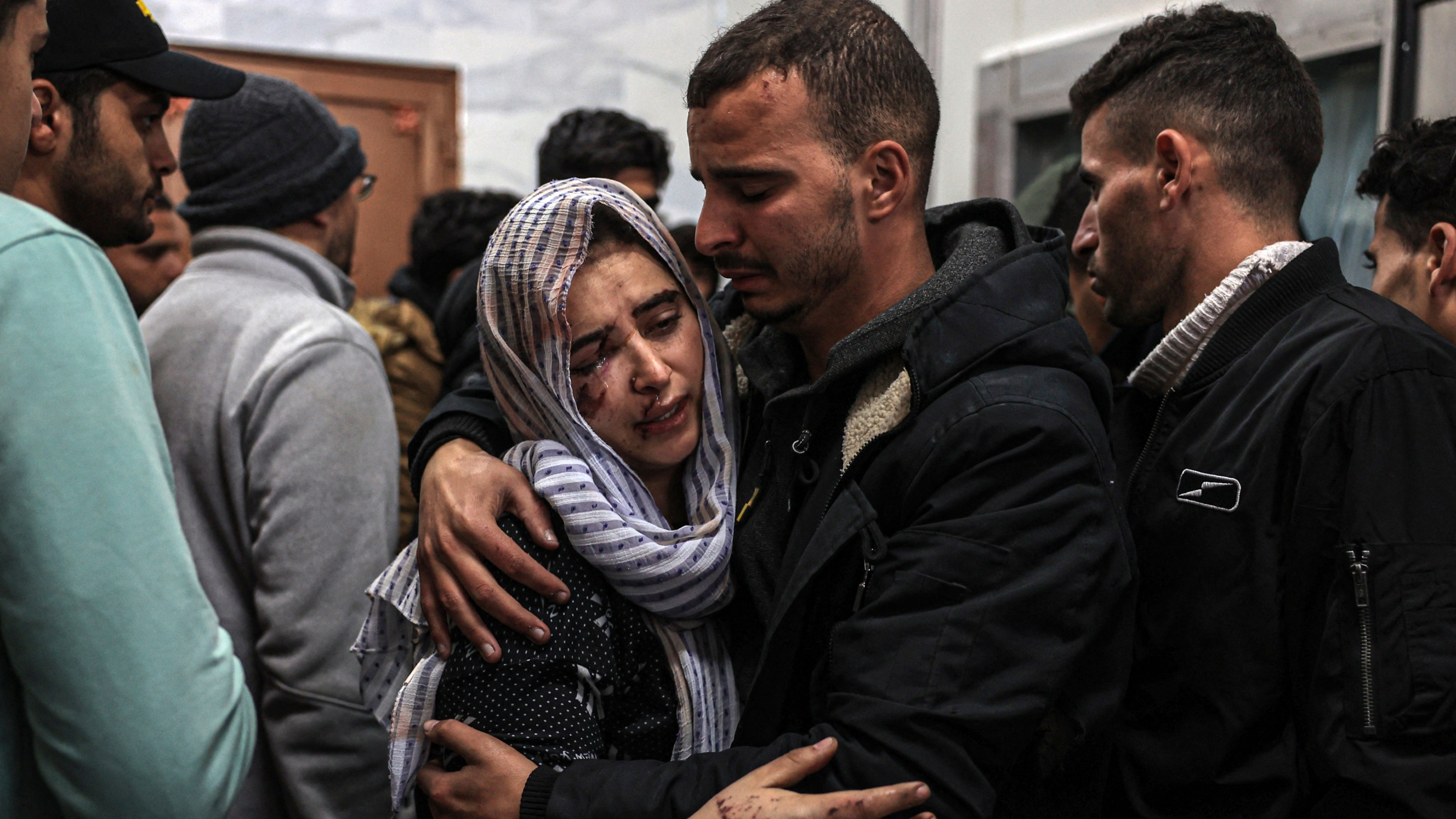
The US, EU, and UK do not tire of defending Israel’s genocidal war against the Palestinian people with the cliched incantation that “Israel has the right to defend itself”.
In August 2022, Israel bombed Palestinians in Gaza over three days, killing 49 people, including 17 children. The US and the EU’s response to the massacre was to declare emphatically their support for “Israel’s right to defend itself” and mutedly to regret the death of Palestinian civilians.
That was the last major massacre Israel committed in Gaza before its current genocidal war, but it certainly was not the first. For that, we must go back to 1951, when Israel began to raid the Gaza Strip.
New MEE newsletter: Jerusalem Dispatch
Sign up to get the latest insights and analysis on Israel-Palestine, alongside Turkey Unpacked and other MEE newsletters
Israel had already expelled hundreds of thousands of Palestinians to Gaza between the end of 1947 and the summer of 1950 when the remaining 2,500 Palestinians from the Mediterranean town of Majdal ‘Asqalan (now the settler-colony of Ashkelon) were loaded on to trucks by the Israeli army. Israel would also expel 7,000 Palestinian Bedouins to Egypt during this period up to 1955.
A history of war crimes
In October 1951, the Israelis raided Gaza, killing dozens of Palestinians and Egyptians, demolishing dozens of houses, and blowing up wells to curb the attempts by the expelled Palestinians to return home across the new borders erected by the Jewish settler colony.
At the time, foreign observers did not mention Israel’s 'right to defend itself' and called the massacre 'an appalling case of deliberate mass murder'
Earlier, in August 1949, Israeli soldiers captured two Palestinian refugees. They killed the man and 22 soldiers took turns raping the woman before killing her. In March 1950, Israeli soldiers abducted two Palestinian girls and one boy from Gaza across the new border.
They killed the boy and then raped the two girls before killing them. By then, it was quite common for Israeli soldiers and police to rape female Palestinian refugees attempting to return to their homes, a practice that was widespread during the Nakba a few years earlier.
In August 1950, for example, four Israeli policemen raped a Palestinian woman picking fruit from her family’s orchard across the West Bank border.
Follow Middle East Eye's live coverage of the Israel-Palestine war
Israeli raids on Gaza would continue in 1952 and 1953, culminating in the Bureij refugee camp massacre in August of that year. The Israeli military unit 101 killed at least 20 Palestinian refugees, including seven women and five children, by throwing bombs through the windows of their huts while they slept and shooting those who fled. Dozens were injured. Other sources put the final tally of Palestinians killed at 50.
At the time, foreign observers did not mention Israel’s “right to defend itself” and called the massacre “an appalling case of deliberate mass murder”. That same year, the Israelis slaughtered 70 Palestinian civilians in the West Bank village of Qibya, which even the Indianapolis-based, pro-Israel National Jewish Post compared to the Nazi massacre at Lidice.
In February 1955, the Israelis raided an Egyptian military camp in Gaza, killing at least 36 Egyptian soldiers and two Palestinian civilians, one of whom was a child.
Until then, Egyptian authorities had been placating the Israelis by policing the borders and preventing Palestinian “infiltration”. After the raid, Palestinians in Gaza rose up against the Egyptian authorities, demanding weapons to defend themselves from the unceasing Israeli raids.
Exasperated by Israeli brutality and bellicosity, and under pressure from the Palestinian refugees, Egyptian President Gamal Abdel Nasser acceded to the Palestinian demand. A group of Palestinian fedayeen retaliated against Israel by raiding it in August 1955 and infiltrating as far as 27 miles inside its borders - ambushing soldiers, laying mines, and attacking vehicles and buildings - during which five soldiers and 10 civilians died.
Lest anyone think that the current Jewish supremacist Israeli government is the first to invoke the biblical “Amalek” to provide a religious imprimatur to its ongoing genocidal war against the Palestinians, as Benjamin Netanyahu did, it was in fact the secular Prime Minister David Ben Gurion who first used the analogy seven decades ago.
Ahead of Israel's invasion of Gaza and Egypt in October 1956, Ben Gurion proclaimed that “the hosts of Amalek” were rearming themselves to “destroy the State of Israel and the people of Israel”.
The Israelis bombed the Gaza city of Khan Younis on 2 November 1956 from the air, killing scores of civilians before Israeli tanks entered the city on 3 November.
The Israelis rounded up resistance fighters and executed them on the spot or in their homes. Meanwhile, in the adjacent refugee camp, the Israelis rounded up all men and boys above the age of 15 in the town square. They proceeded to machine-gun them, killing between 300 and 500 people, the vast majority of whom were civilians and half being 1948 refugees. They occupied Gaza and the Sinai Peninsula until they were forced out by the US and the USSR in March 1957.
'Genocidal atrocities'
In the past few weeks, Israel carried out massacres in Khan Younis, Gaza’s second-largest city, which Israel dubbed “a dangerous combat zone” after it had served as a safe zone for one million Palestinians who had fled northern Gaza. It included the slaughter of 30 civilians sheltering at a school from Israel’s savage bombings. The relentless mass killing of Palestinians since 7 October makes the 1956 savage Israeli massacres seem humane in comparison.
The only 'victory' that the Israeli military has scored since 7 October is the slaughter and injury of tens of thousands of civilians and displacement of more than two million others
In 1967, Israel again invaded and occupied Gaza. It expelled 75,000 Palestinians from the Strip and prevented 50,000 more (who were working, studying, or travelling outside Gaza when Israel invaded) from returning home. It confiscated 60 percent of the land and all the water of the Palestinians, much of which was for the exclusive use of the Jewish colonists who had access to 18 times the amount of water available to the indigenous Palestinians.
The Jewish colonists had 85 more (stolen) land per capita than the Palestinian owners of the land. Israel subjected the entire Palestinian population to a racialised military occupation during which it destroyed Gaza’s economic infrastructure until 2005.
Since Israel’s redeployment around Gaza in September 2005 and its incarceration of 2.3 million Palestinians in the Gaza concentration camp, the Israelis launched numerous bombing campaigns against the camp’s civilian inmates and the resistance, including in 2006, 2008-2009, 2012, 2014, and 2021, killing thousands of civilians.
The only "victory" that the Israeli military has scored since 7 October is the slaughter of tens of thousands of civilians, with tens of thousands more injured, and more than two million others displaced. It has further succeeded in the destruction of homes and residential buildings, hospitals, schools, libraries, municipal buildings, churches and mosques. Despite all the civilian slaughter and destruction, its reputation for military preparedness has been lost for the foreseeable future.
As more and more details trickle out of Israel’s murder of its own civilians and destruction of their homes on 7 October, it will be a long time before it can recapture some of the fictional military allure it had previously enjoyed in the West and among its Arab allies.
One of the more interesting ironies of the current Israeli war is that whereas the US empire and its EU and UK subsidiaries continued to rearm Israel since 8 October without respite so that the settler colony could continue its genocidal war, it is the Palestinian resistance that has had no weapons replenishment since that date and yet continues to score military victories against the Israeli invaders.
But not only have the Americans been the major party to this war against a colonised and brutalised people, Jake Sullivan, President Biden’s national security adviser, went further by identifying the US with Israel so much that he referred to the Palestinian resistance as the “enemy” of the United States.
Sullivan said he had “discussed the conditions and timing for Israel to wind down the current phase of its operations with Israeli leaders", including Prime Minister Benjamin Netanyahu. But he declined to specify a time frame, saying that neither wanted to “telegraph for the enemy what the plan is”.
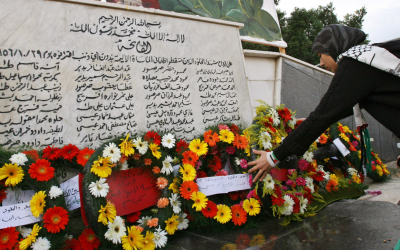
If pro-Israel Americans likened the 1953 Qibya massacre to the Nazi massacre at Lidice, and famed Ashkenazi Israeli columnist Yehoshua Radler-Feldman, known by the pen name Rabbi Benyamin, wrote of the 1956 massacre of 50 Palestinian citizens of Israel in the village of Kafr Qasim “that soon we will be like Nazis and the perpetrators of pogroms”, today both Israeli officials and Palestinian resistance spokespersons are repeatedly referring to each other as “Nazis”.
But while the Palestinian spokesmen refer to the Israeli government and its military as Nazis and fascists, Israeli officials label the Palestinian people as a whole as “Nazis”.
Given the shameless racist discourse among Israeli officials about the Palestinians as “animals” and “subhuman”, the extraordinary force of the indiscriminate Israeli killing machine, and the scale of Israel’s genocidal atrocities, the appropriateness or inappropriateness of the analogy is up for debate.
What remains beyond doubt, however, is that while the industrial scale of Israeli atrocities in Gaza is unprecedented, their cruel nature has been part and parcel of Israel’s war on the Palestinian people since 1948.
The views expressed in this article belong to the author and do not necessarily reflect the editorial policy of Middle East Eye.
Middle East Eye delivers independent and unrivalled coverage and analysis of the Middle East, North Africa and beyond. To learn more about republishing this content and the associated fees, please fill out this form. More about MEE can be found here.



